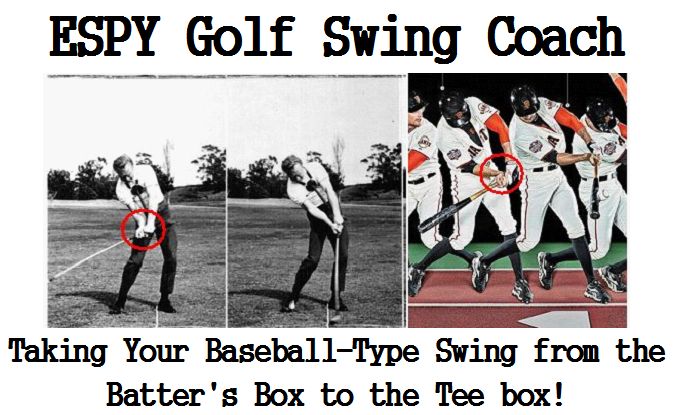Inside-the-leather Classic Golf Swing Mechanics and simple golf swing tips for Self-coaching Techniques and Procedures (STP).

We all have heard the term THE IT FACTOR, but what is THE IT FACTOR? After listening to Brooks Koepka’s press conference at the PGA Championship, he pretty much confirmed what I thought THE IT FACTOR was– Focus, Instincts, Trust your Training. We’ve all heard the phrase- Focus and Trust your Instincts!
The Sports Psychology Behind THE GOLFER’S FIT² FACTOR
We can all recognize THE IT FACTOR when we see IT. Tiger Woods, Nolan Ryan, Tom Brady, Michael Jordan, and Brooks Koepka, just to name a very few, all have THE IT FACTOR. We might have difficulty defining the ingredients and placing our fingers on what makes up THE IT FACTOR. But there is little doubt that THE IT FACTOR exists.
But the Question still remains- What is THE IT FACTOR?
There are two quotes that can help isolate and lead us to what THE IT FACTOR is. The first quote from Mother Teresa- Be faithful in small things because it is in them that your strength lies. Stamina is, no doubt, an important ingredient in THE IT FACTOR.
The second quote is from Charles Comiskey; has anyone heard of Comiskey Ballpark? – It is the small things in life which counts. It is the inconsequential leak which empties the biggest reservoir. Just taking your focus off the small things can derail an athlete’s performance. They call this a slump.
These two quotes and a comment from the Tennessee Baseball Coach, Tony Vitello, can isolate the ingredients that create THE FIT² FACTOR in athletics.
Coach Vitello had a pitcher who experienced a slump and needed help working his way out of his slump. Coach Vitello told the pitcher to just focus, The ‘F‘ Factor in FIT², on the small simple techniques and do those right until everything else starts to fall into place. In other words, focus and trust your instincts. The Small Things, done right in the proper sequence, are the essence of the athlete’s performance.
Focusing on the small things are actually our Instincts, the “I” part of THE FIT² FACTOR. The “T’s or T²” stands for Trusting your Training. There’s not one movement in the golfer’s entire golf swing sequence that isn’t a normal instinct that the golfer hasn’t performed before, especially focusing on their wrists and forearms. All components of the golfer’s performance, in this case, are contributed to their fine motor skills, the same with any sport. It’s a matter of which instincts and in what order that these critical parts of the golfer’s training are performed.
The critical part of developing instincts is that these have to be formed at least before a person reaches their eighth (8th) birthday, on average. Believe me, you have every instinctive component needed to make a consistent golf swing, if you’ve ever picked up a baseball bat before. The only obstacle the golfer will have to overcome is trusting their Instincts and developing the proper Training techniques. There’s little to no chance that you will develop new fine motor skills after age eight (8).
Believe me, everything you need to make a consistent golf swing is literally right under your nose when you address the golf ball, and these are your wrists and forearms. SEE THE BALL, HIT THE BALL!
Child Prodigy
At last month’s awards ceremonies of the Medal of Freedom, President Trump described how Earl Woods would take a very young Tiger Woods out to the garage in a highchair, just to simply watch Earl hit golf balls into a mattress. Later Earl would become Tiger’s coach, as soon as Tiger could hold a golf club in his hands.
This is exactly how your child prodigies are developed in music and in sports, based on developing the fine motor skills and proper training at a young age. Even if the child isn’t actually performing the golf swing, they are still influenced by just watching others who are performing the golf shot, like Earl hitting golf shots in the garage. You develop interest in what you’re exposed to, especially at a young age. Look at the Manning family, where Archie, Peyton, and Eli are great examples of early childhood development.
The Instincts of THE FIT² FACTOR
While most of us might do not have Earl Woods-type father training, most of us had a father, mother, uncle, aunt, brother, sister, or friend that placed a baseball bat into our hands at a young age. I still remember my Grandmother Boatright buying me my first bat and ball at age six for my birthday, and my grandfather teaching how to swing the bat and hit the soft baseball.
Most of us have those black and white photos still around with us choking down on a baseball bat with that determining look on our faces. Most of us actually learned to swing a baseball bat way before we ever picked up a golf club. So why not capitalize on these instincts?
My Xerox Kinesiology Project
For my Kinesiology final project, I did my paper on comparing the golf swing to that of the baseball swing. From the hundreds of feet of time-lapse film and photographs that I viewed, I found some unique similarities. The two swings are actually more similar than they are different. The differences are mainly in the lower body.
I spent hours examining, side-by-side, the time-lapse photos comparing the golf swing to the baseball swing. I found almost a Xerox photocopy of the wrist action in both swings. I have circled in red the wrists of the golfer and the baseball batter right before impact. This should give you the TRUST Factor, the first T, that you’ll need to develop for your own FIT² FACTOR.
You can actually take the Sync/Preset Technique I developed for the golf swing and actually improve your baseball swing hitting average.

I produced a YouTube Video regarding the wrist action in the Bunt-Type Chip Shot. Even though this is a golf shot made around the green, it is exactly the same wrist action as the full golf shot you will make from tee-to-green. But this type of golf shot requires more finesse than your full shot, which is exactly what the golfer wants to develop, their feel. Pay close attention to how I use a Home Plate Training Technique in this YouTube Video. This will definitely improve your golf swing:
The following Download consists of 18 pages of EASY to follow Self-coaching Techniques and Procedures with videos, illustrations, and diagrams to help you develop your own natural instincts and skills to have a more consistent golf swing and golf game.
These Self-coaching Techniques and Procedures not only address the physical game, but the larger mental game of golf. These Self-coaching Techniques and Procedures develop your confidences to take your golf game to the golf course. Please purchase your copy of QATR-505- The Golfer’s FIT² Factor, Applied Sports Psychology

